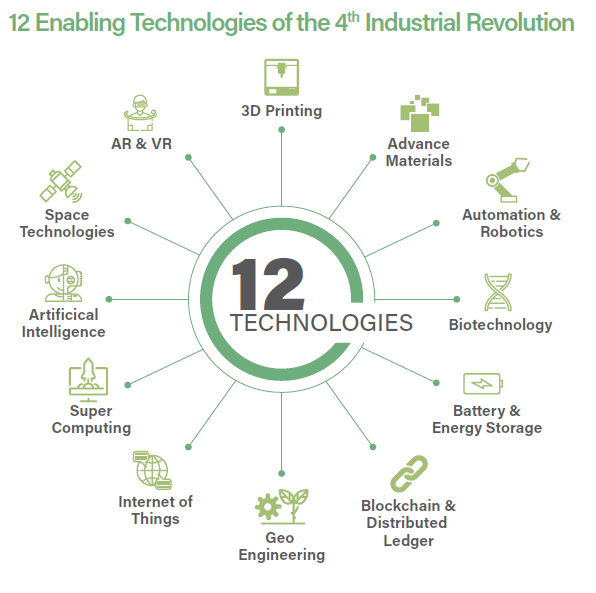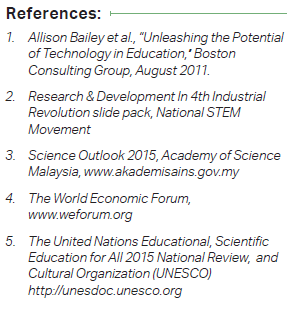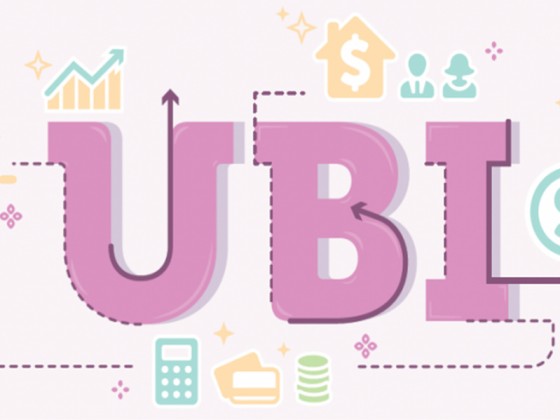by | Natrah Mohd Emran | natrah@might.org.my
The 4th Industrial Revolution corroborates the advancement of technology, its application, and its impact on almost every facet of business sectors and arenas. However, the level of disruptions, the risks, and the opportunities is different for each field. The impact on employment, for instance, highlights new skills that are required as the work of the future is likely to require more flexibility, agility, networking and inter-connectivity.
The World Economic Forum (WEF) enlisted ten skills for the future of work, which includes complex problem solving, critical thinking, creativity and people management. Therefore, to provide a fully qualified and continuous supply of workers in the workforce, the education system requires some necessary changes.

What are the Drivers of Education in the Future?
There are a number of Foresight studies envisioning what the future scenario will look like for education, starting from the early learning programmes up to the tertiary level of educational systems. Changing trends and challenges are observed, among others are; demographic changes, technology advancements at more affordable costs, changing values and culture of the society, an accessibility to an abundance of informative content, as well as required skills and capabilities needed in the future workforce. From the observation, there are four main drivers that will shape the future of education.
- Students of the future – their needs and expectations: Students of tomorrow are a generation of net-natives that have grown up with smart phones, social media and virtual gaming. These students (including their parents) will expect the preschool, school and university experience to reflect the real-time, connected nature of the web. This network of always-on students (and parents) will want constant access to learning materials and resources, friends, and experts. They will expect personalised and customisable learning environments. As a result, the future of education will be more learner-centered, experiential, immersive and social.
- Changing of teaching delivery: Accessibility to information, artificial intelligence (AI) and mobile devices will impact the future teaching and learning. For instance, routine academic tasks such as grading assignments, can be automated with the help of AI. For most people today, pedagogy (which refers to a strategy or style of instruction) conjures up an image of a packed lecture hall or a classroom tutorial. These developments will mean that entirely new forms of pedagogy will be made possible in the future. These will be radically different from the way that education is delivered today, effectively providing more appropriate learning strategies than those employed currently. Teachers and lecturers will not be the only source of knowledge like the old days but will become more of a source to verify the acquired knowledge from various resources.
- Physical facilities and learning environments: Educational technology is improving rapidly—high-quality online content is exploding, and the supporting infrastructure, such as cloud computing and mobile devices, is growing. The ability to connect students with remote, high-quality instructors multiplies these factors. To compete with virtual spaces such as online platforms and web-based environments, physical learning environments will have to provide benefits that go beyond face-to-face access to people. Classrooms, schools, or universities will have to be places where students genuinely want to spend time. Compelling reasons might include access to specialised facilities such as smart classrooms and lecture theatres, or access to high-quality, healthy food at affordable prices.
- Skills needed by future employers: In a world dominated by information and the analysis and interpretation of data, future employees will need to be able to process complex information as well as effectively solve problems. They will also need important intangible or soft skills. The ability to adapt to new situations, generate new ideas, engage with others and solve unexpected problems is crucial in the knowledge economy. Soft skills become even more important as technical work is increasingly handled by computer. Listening, relationship-building and creative collaboration are all skills that will be much in demand, all of which depend on effective communication between people. According to WEF, creativity will become one of the top three skills workers will need. With the avalanche of new products, new technologies and new ways of working, workers are going to have to become more creative if they are to benefit from these changes. Robots may help us get to where we want to be faster, but they cannot be as creative as humans.
Role of STEM
However, currently in Malaysia, the percentage of students in the science stream is far less compared to the percentage of those in the arts. It is estimated that STEM professions will represent 75 percent of the workforce by 2025. Dominant future workforce profiles will include highly qualified engineers from emerging economies, tech-savvy individuals from the Facebook Generation and employees who work well past the current retirement age. The result will be a workplace characterised by hyperdiversity, where people from different cultures and generations, with different beliefs and requirements, share spaces and work together.
Thus, it is inevitable that science, technology, engineering and mathematics (STEM) will be critical subjects in the industrial revolution and in preparing the future workforce. In the future, there will be a hike in demand for technology literate workers, to make, manage, and maintain the technology. STEM professionals are tasked with solving the complex problems of today’s world and its future. They are working to find solutions for global warming, cancer, third world hunger,
disappearing habitats, and an interdependent world economy. Yesterday’s stereotype of the geek in a lab coat is not representative of today’s STEM teams, where economists work with researchers on technical transfer and engineers build the state-of-the-art equipment for businesses working with cuttingedge technologies.
Conclusion
The potential for technology to transform education has been touted for decades, yet the field has resisted technology adoption. Technological advances are accumulating, with cycles of innovation becoming more rapid, equipment more affordable, and
students more tech-savvy. After all, technologies must be embraced fully. Technology needs to drive strategy, and not merely be an add-on.











